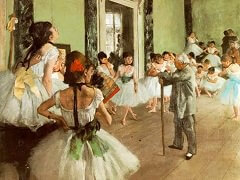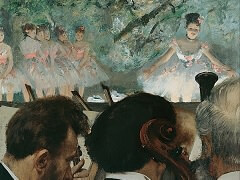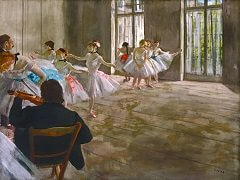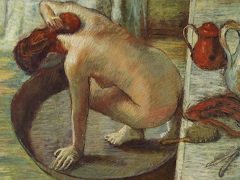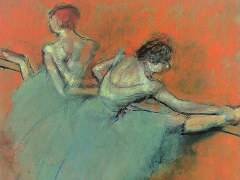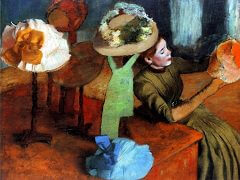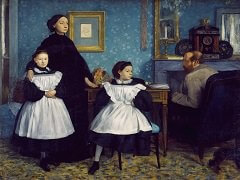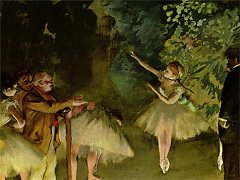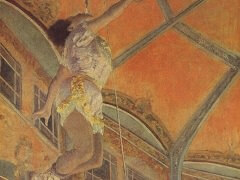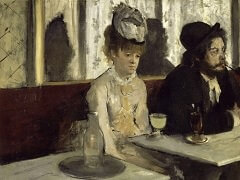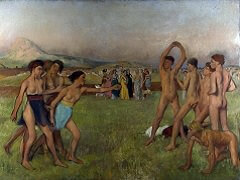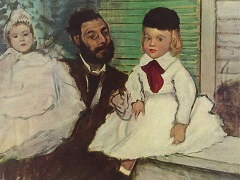Dancers, 1889 by Edgar Degas

This late pastel of the ballet shows Degas returning to a theme which occupied him often during his later years- a close-up of a group of dancers, waiting in the wings, touching their costumes, a moment of relaxation between active moments of the dance. As a matter of fact, the older Degas grew, the less likely was he to attempt the more violent action of the ballet on the stage. He went seldom to the theatre and his dancing pictures became more set as he studied individual models in his studio. Perhaps it was this quality that lay behind the testy exclamation of Zola, "I cannot accept a man who shuts himself up all his life to draw a ballet girl as ranking co-equal in dignity and power with Flaubert, Daudet, and Goncourt."
As a matter of fact Degas had long left off any attempt at realism in the sense Zola admired and practiced it. In such a pastel as this he expressed, rather than described, the curious and unexpected effects of color and light backstage, strongly, vividly studying the way various hues played on one another, exaggerating reflections, drawing his figures broadly, striping and overlaying his pastel to gain new effects of texture. The result is a strengthening of the Impressionist broken color and at the same time a new fantasy and unreality in the treatment of the theatre and its dancers.



